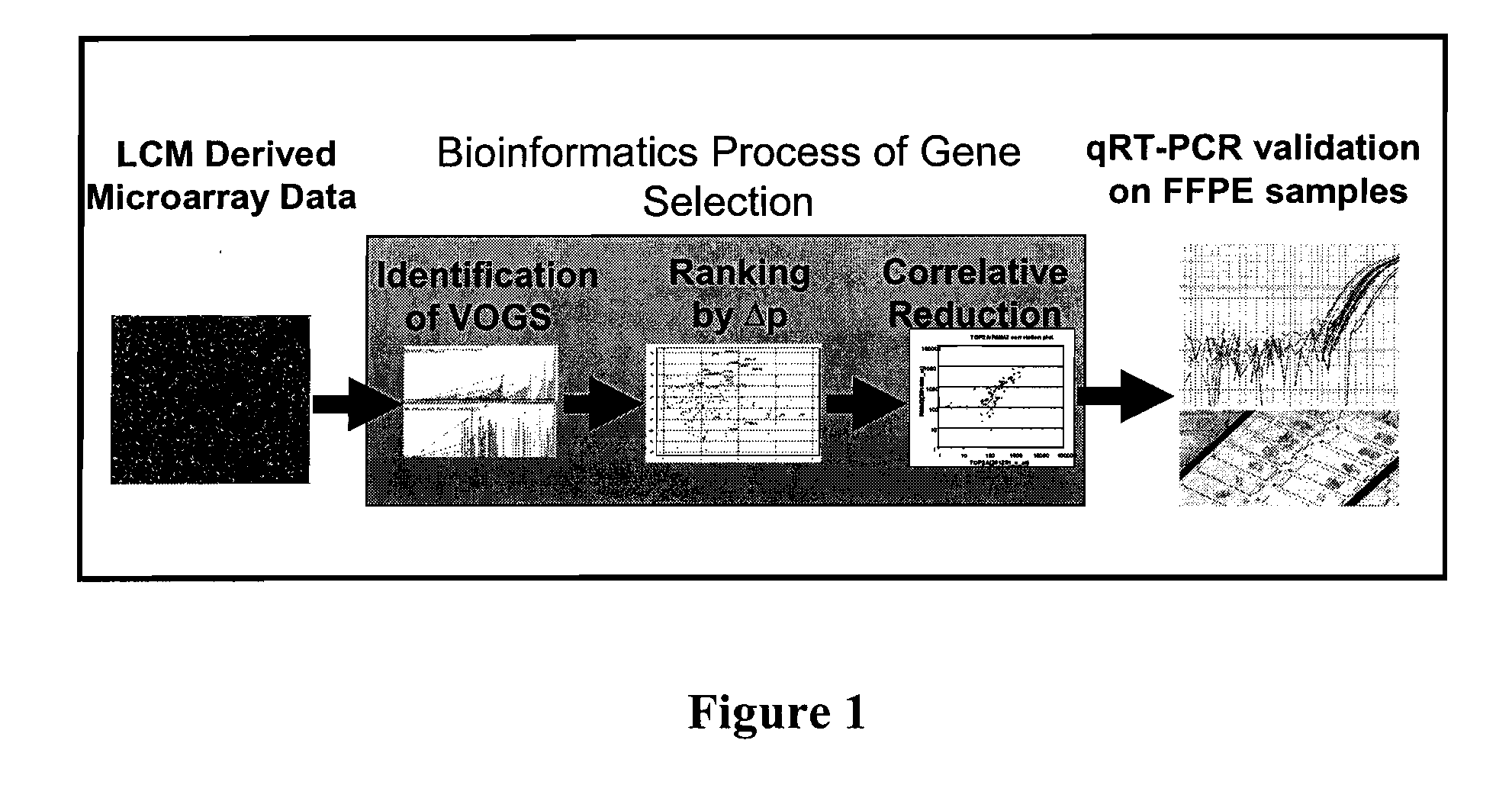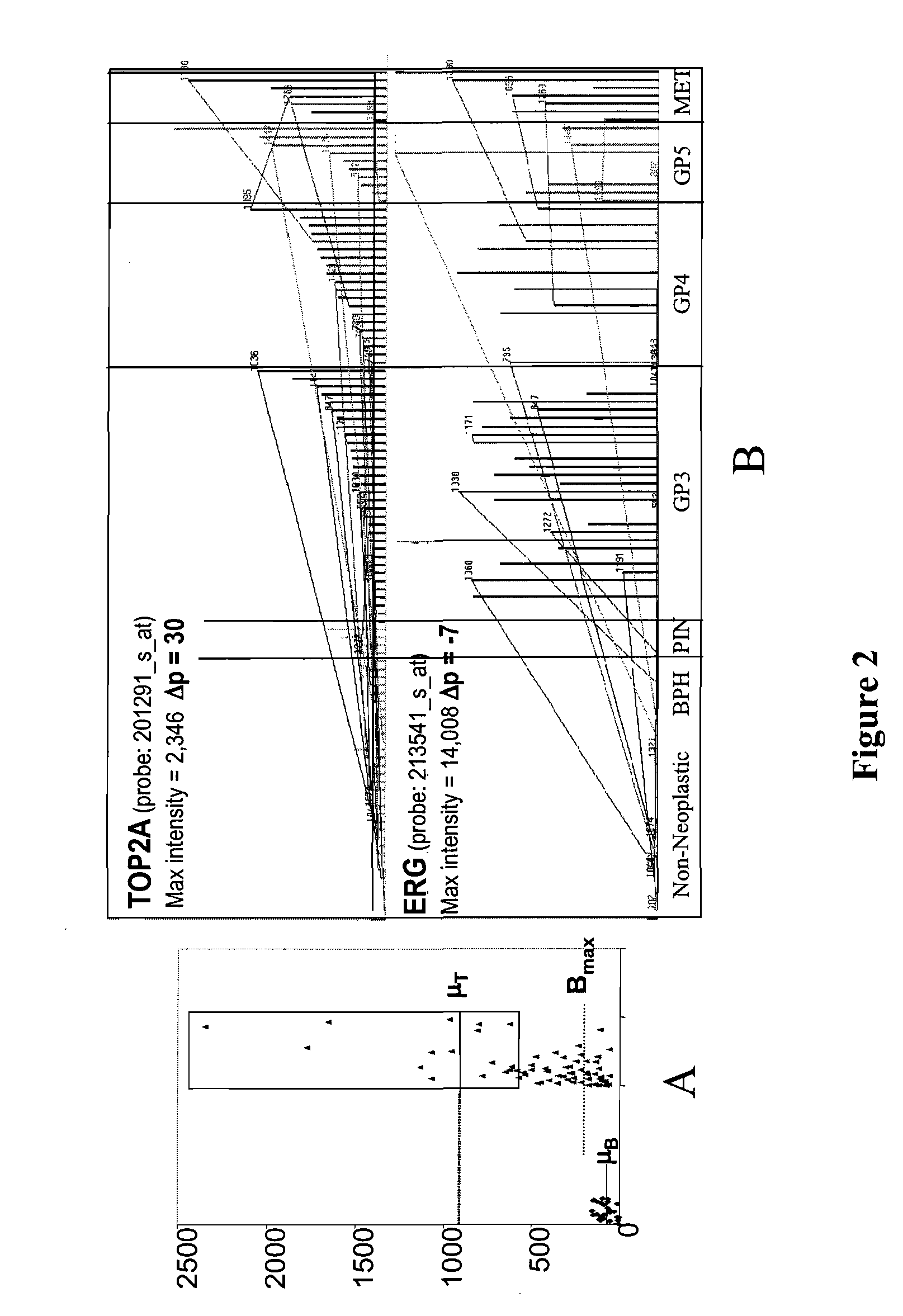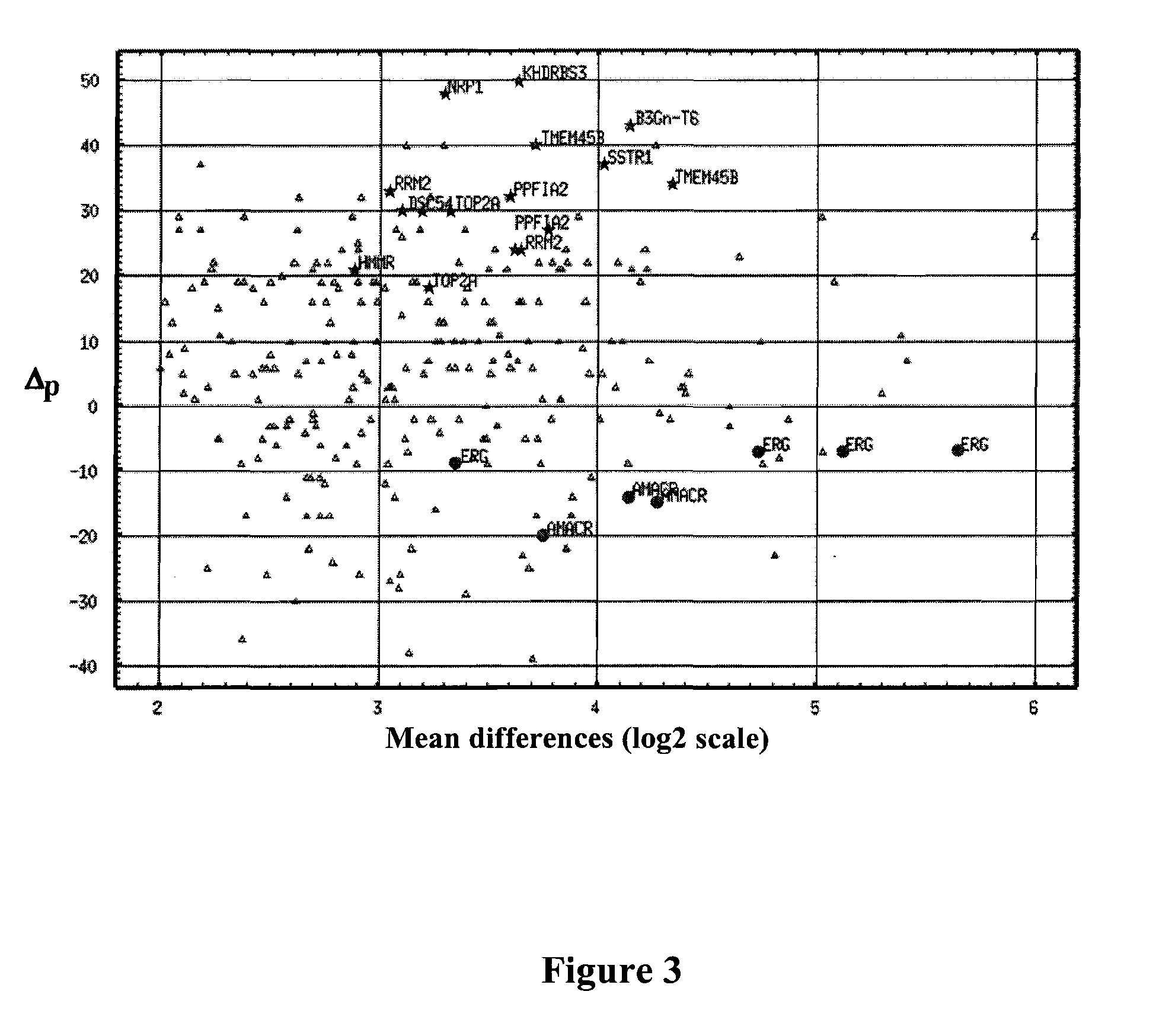Predicting cancer outcome
a prostate cancer and outcome technology, applied in the field of methods and materials involved in assessing prostate cancer, can solve the problems of high uncertainty, inability to perform surgery, and inability to accurately predict the outcome of cancer, so as to avoid unnecessary treatment and suffering, and high uncertainty. the effect of high level
- Summary
- Abstract
- Description
- Claims
- Application Information
AI Technical Summary
Benefits of technology
Problems solved by technology
Method used
Image
Examples
example 1
Gene Expression Profiling
[0048]Gene expression was profiled in cancerous and non-cancerous prostate epithelial cells using microarray technology. The cells were collected from 101 frozen tissue samples using laser capture microdissection. Benign epithelial cells adjacent to tumor tissue were collected from 19 tissue samples (cases). Cells were also collected from 10 benign prostatic hyperplasia (BPH) cases, 5 prostatic intraepithelial neoplasia (PIN) cases, 30 cases with only Gleason pattern 3 (Gleason score 6), 20 cases with only Gleason pattern 4 (Gleason score 8), and 10 cases with only Gleason pattern 5 (Gleason score 10). In addition, prostatic adenocarcinoma cells were collected from 7 cases with lymph node metastases. Total RNA was extracted from cells of each type collected. Each RNA sample was linearly amplified, labeled, and hybridized to a U133 Plus 2.0 array (Affymetrix, Santa Clara, Calif.). The arrays were washed, stained, and scanned. The gene expression data were ana...
example 2
[0049]The gene expression data generated as described in Example 1 were analyzed using bioinformatics. The bioinformatics analysis was designed to account for the heterogeneity of prostate cancer better than other methods that require more consistent differential expression of nucleic acids in tumor samples. The analysis included three steps (FIG. 1). In the first step, probesets were identified that had significantly higher expression levels in a subset of tumors than in non-neoplastic tissues. Genes corresponding to these probesets were named variably overexpressed genes, or VOGs. In the second step, genes associated with prostate cancer outcome were identified by selecting probesets that were over-expressed in a higher percentage of aggressive tumors than non-aggressive tumors. Gleason pattern was used as a surrogate measure of aggressiveness. In the third step, genes that had similar expression patterns across tumor samples were grouped to minimize overlap of ...
example 3
Biomarker Validation
[0056]Genes that had high Δp values or high expression levels in aggressive tumors were selected for validation. Gene expression was analyzed in formalin-fixed, paraffin-embedded (FFPE) tissues that were independent from the tissue samples used in nucleic acid expression profiling described above. The tissues were obtained from men who had a prostatectomy and at least five years of follow up information. Cases were defined as high-grade (Gleason score of 7 or higher) prostate cancer tissues from men who failed systemically within five years of prostatectomy. Controls were defined as high-grade prostate cancer tissues from men who did not have systemic progression seven years after their surgery. The case and control tissues were matched with respect to Gleason score, pre-operative PSA level, age, year of surgery, and margin, seminal vesicle and / or nodal invasion. One hundred pairs were randomly selected for validation experiments, and all samples for which tissue...
PUM
| Property | Measurement | Unit |
|---|---|---|
| Fraction | aaaaa | aaaaa |
| Fraction | aaaaa | aaaaa |
| Fraction | aaaaa | aaaaa |
Abstract
Description
Claims
Application Information
 Login to View More
Login to View More - R&D
- Intellectual Property
- Life Sciences
- Materials
- Tech Scout
- Unparalleled Data Quality
- Higher Quality Content
- 60% Fewer Hallucinations
Browse by: Latest US Patents, China's latest patents, Technical Efficacy Thesaurus, Application Domain, Technology Topic, Popular Technical Reports.
© 2025 PatSnap. All rights reserved.Legal|Privacy policy|Modern Slavery Act Transparency Statement|Sitemap|About US| Contact US: help@patsnap.com



